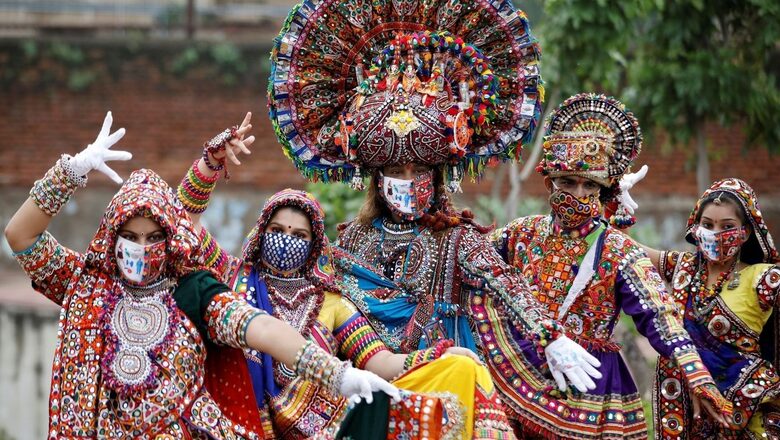
views
It was April 12, 2021. India had registered 1.69 lakh Covid-19 cases to become the second worst-hit country. A total of 60 lakh people travelled to attend Mahakumbh the same month. Half a year later, on October 15, the country again came together to celebrate Dussehra. But this time, India logged the lowest Covid-19 cases in 214 days at 16,862.
By the time Kumbh ended on April 28, 91 lakh people had attended the festival, according to government data. Similar was the case in October. Flights were full, trains were sporting long wait lists as people travelled to their families across India. From one mass religious event to another, what changed?
Vaccinations
On January 16, 2021, India started its Covid-19 vaccination campaign. In the first phase, frontline workers were prioritised for vaccination, followed by people over 60 and people over 45 with co-morbidities, to then later include everyone above 45 years. It was only on April 28, 2021, that India opened vaccine registration to everyone over 18 years of age, with vaccination beginning from May 1, 2021. However, this was delayed in some states. The vaccination drive slowed down in late March due to supply and demand related issues.
As of April 30, 2021, 15.23 crore individuals had been vaccinated.
Vaccination numbers grew by leaps and bounds in the coming months. India clocked highest daily inoculations globally. More than 8.36 lakh Covid-19 vaccine doses were administered in India on October 15, taking the total number of jabs to over 97.23 crore.
It took the country 85 days to administer the first 10 crore doses, the next 10 crore took 45 days and, in another 29 days, India touched the 30-crore mark. The biggest jump, however, came on September 17, when more than 2.1 crore doses were given in a day.
State curbs
Despite high vaccination numbers, states by now had realised the dreadful effects of mass gatherings and letting loose was not an option.
In Gujarat, state authorities allowed as many as 400 people to gather for garba celebrations, provided they were fully vaccinated. Further, the cap on the number of people allowed to attend weddings and funerals was also capped at 400. Hotels and restaurants were allowed to operate at 75 percent capacity. The night curfew timings were extended by an hour – from 11 pm to midnight – in eight cities across the state: Ahmedabad, Rajkot, Bhavnagar, Junagadh, Jamnagar, Gandhinagar, Surat, and Vadodara.
In Maharashtra, the Brihanmumbai Municipal Corporation (BMC) stated that no garba celebrations will be permitted. Urging people to follow Covid-19 protocols, the BMC has encouraged mandals to arrange online darshan and use social media to reach devotees.
After taking the decision to reopen places of worship on October 7, the BMC allowed religious places to operate at 50 per cent capacity as long as they are sanitised thrice a day and do not distribute sweets and offerings. For households, five people were allowed to take part in immersion festivities whereas for community groups, a maximum of 10 devotees were allowed to participate. In both cases, participating devotees must be fully vaccinated against Covid-19, said BMC.
The Delhi government banned public celebrations of Chhat Puja. Districts with a positivity rate below 5 per cent were allowed to obtain permission from the District Magistrate for Ramlila and Durga Puja gatherings.
In Gujarat, halls were made to operate with a maximum capacity of 50 per cent, with a ceiling of 200 people allowed in closed spaces. The state authorities said that stalls and eateries will not be permitted as part of the celebrations.
In Uttar Pradesh, as many as 100 people were allowed to gather outside containment zones. The guidelines said that venues must ensure a distance of 6 feet between people’s seats. The state has also mandated that a Covid-19 helpdesk be set up at the entrance of venues.
All of this was in stark contrast to how states prepared for Kumbh.
Moving towards mass immunity?
More than 73 per cent of the eligible population in the country has received the first dose of the Covid-19 vaccine. India is likely to achieve its 100-crore vaccination mark by the middle of October.
According to a report by Times of India, experts said genomic sequencing and other studies conducted till mid-October show there is no sign of the virus mutating nor has a new variant emerged. And while infections and even breakthrough infections might occur, they are most likely to be mild and the cases few and far between.
Read all the Latest News , Breaking News and IPL 2022 Live Updates here.


















Comments
0 comment